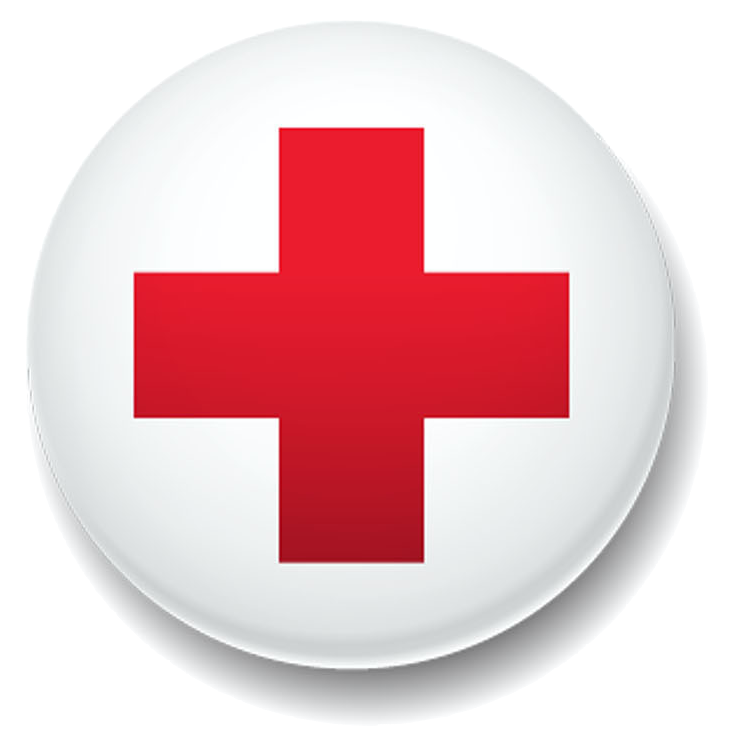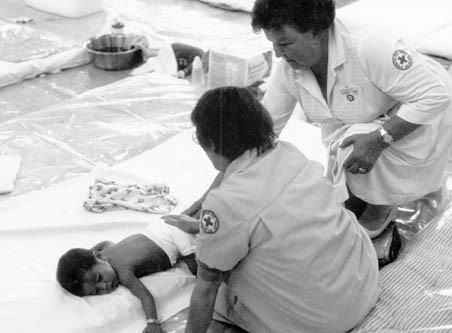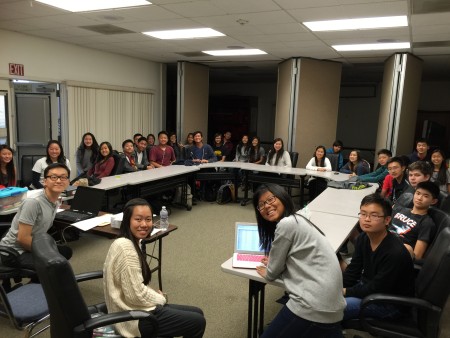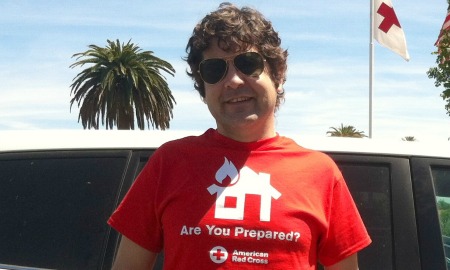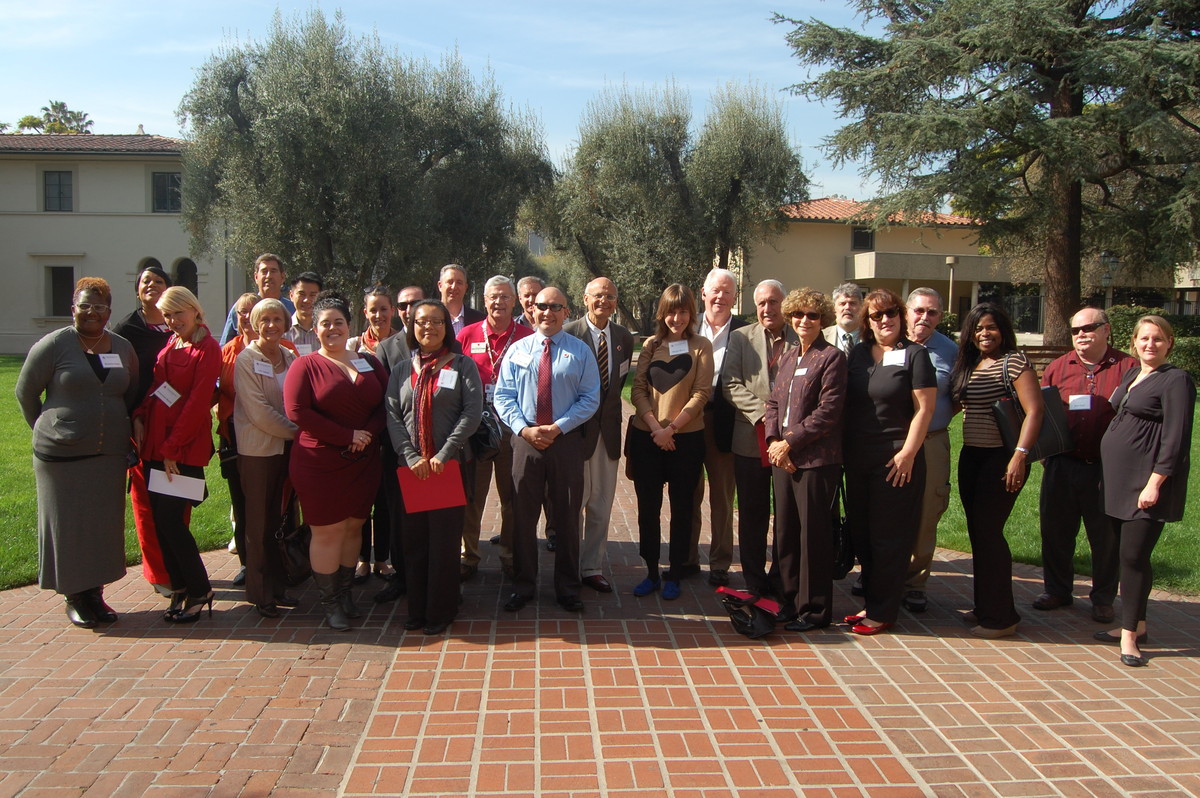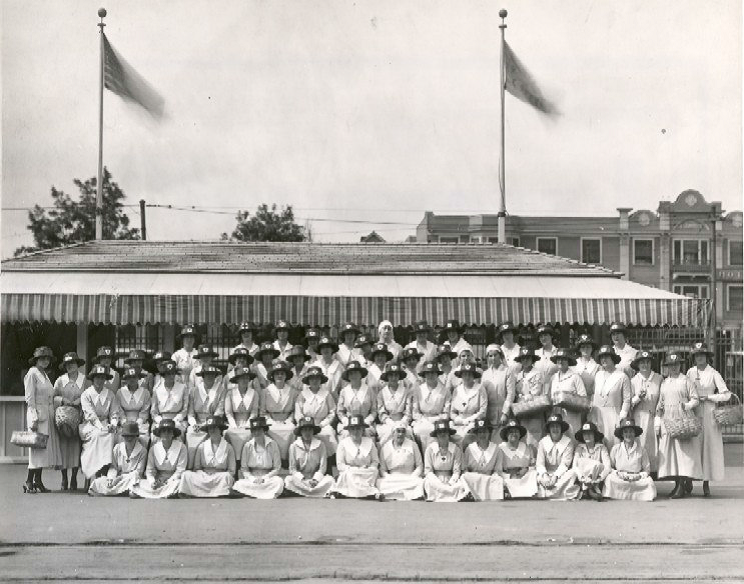 Throughout the Red Cross Month of March, the Red Cross Los Angeles Region is Celebrating its 100 Years of Service with a series titled: Centennial Flashback. This will be a historical snapshots about the Red Cross L.A. Chapter in action during the past 100 years
Throughout the Red Cross Month of March, the Red Cross Los Angeles Region is Celebrating its 100 Years of Service with a series titled: Centennial Flashback. This will be a historical snapshots about the Red Cross L.A. Chapter in action during the past 100 years
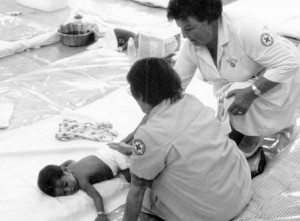
Photo caption: Orphans from Vietnam was cared for by chapter volunteer nurses during “Operation Babylift”.
At the end of the long conflict in Vietnam in the 1960s and 1970s, the American Red Cross of Greater Los Angeles was very active in aiding the thousands of South Vietnamese and other Southeast Asians who fled the area to escape communism.
The first refugees began arriving at Camp Pendleton on April 29, 1975, and by May 10 there was an “instant city” with a population of 18,000 living in 995 tents and 140 Quonset huts.
There were no bathing facilities, and the only water available came from water lines that had been run through the camps with faucets here and there. Each tent had its own trash can, and 600 dry toilets had been brought in and placed in alternate rows between the tents, two toilets for every three tents. The tents each housed 10 to 15 refugees.
It wasn’t a disaster situation, but it was a long term mass care problem, so the U.S. government asked the American Red Cross to provide its disaster relief expertise and its trained personnel to help make life for the refugees a little more bearable. Our chapter, both volunteers and paid staff, was a leader in the efforts to help.
The first Red Cross effort was to distribute warm clothing for infants, layettes, blankets and diapers. Adults received comfort kits by the thousands, each containing personal toilet articles such as tooth paste, razors, hairpins, soap, safety pins, combs, etc.
The most visible Red Cross services were nursing and health activities, with an average of 35 volunteer nurses providing 24-hour coverage in five outpatient clinics and a temporary infirmary. Each day, a Red Cross nurse visited the tents to check on current patients and to look for new ones. Every 24 hours, nurses in medical facilities and those going tent-to-tent treated an average of 1,000 to 1,200 patients.
Housed in two trailers was Red Cross Family Services, where refugees could find caseworkers and volunteer case aides to help them locate missing relatives or communicate with friends and prospective sponsors. Red Cross handled some 4,000 requests for sponsorship of about 17,000 refugees.
All communication went over two Red Cross TWX machines that handled an average of 250 to 300 wires a day. Chapter caseworkers spent several years helping the refugees reunite with their families.
Perhaps the most popular Red Cross activity was the canteen, a 15-by-20-foot tent that offered fruit juice, coffee and cookies from 8 a.m. to 8 p.m. every day. Also popular were the play activities Red Cross youth volunteers provided for the children.
OPERATION BABY LIFT
Many children were orphaned by the tragic conflict. Several hundred of these were flown to the U.S. to be adopted by American families. On April 12, 335 children arrived at LAX. Of these, 171 were immediately placed on another plane and flown to Ft. Benning, Georgia. A number were ill and transported to hospitals for care.
The remaining 114 were taken by bus to a reception location where our chapter Red Cross nurses and volunteers worked along side their counterparts from the Long Beach Chapter to care for them. Nearly 1,000 volunteers, volunteer nurses, volunteer doctors and translators served on this important activity.
